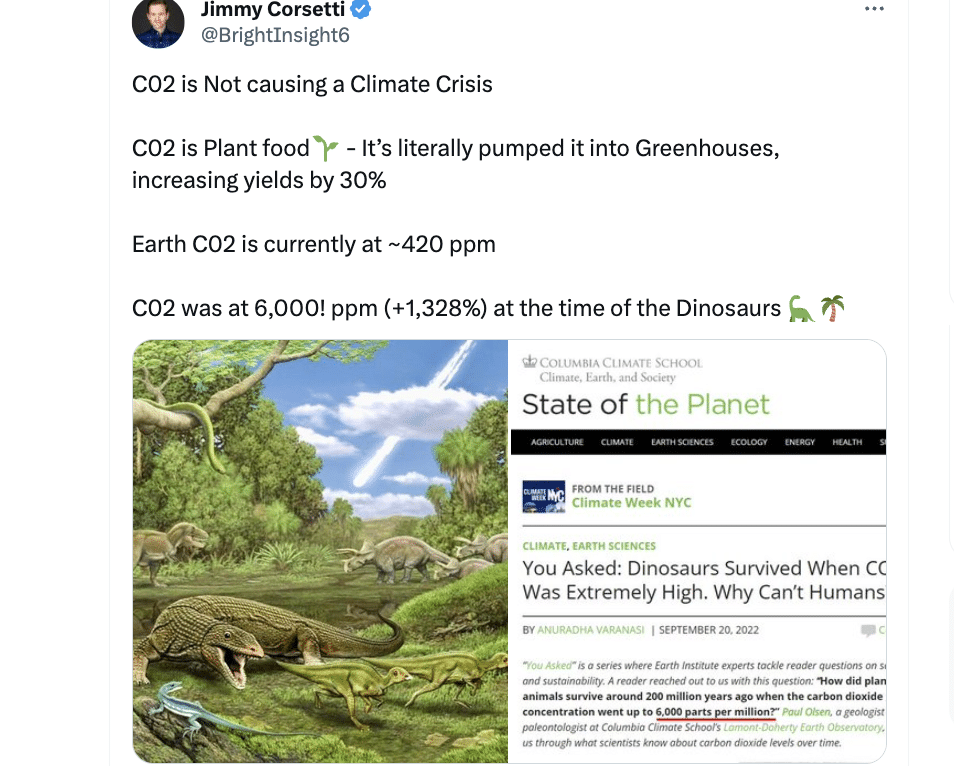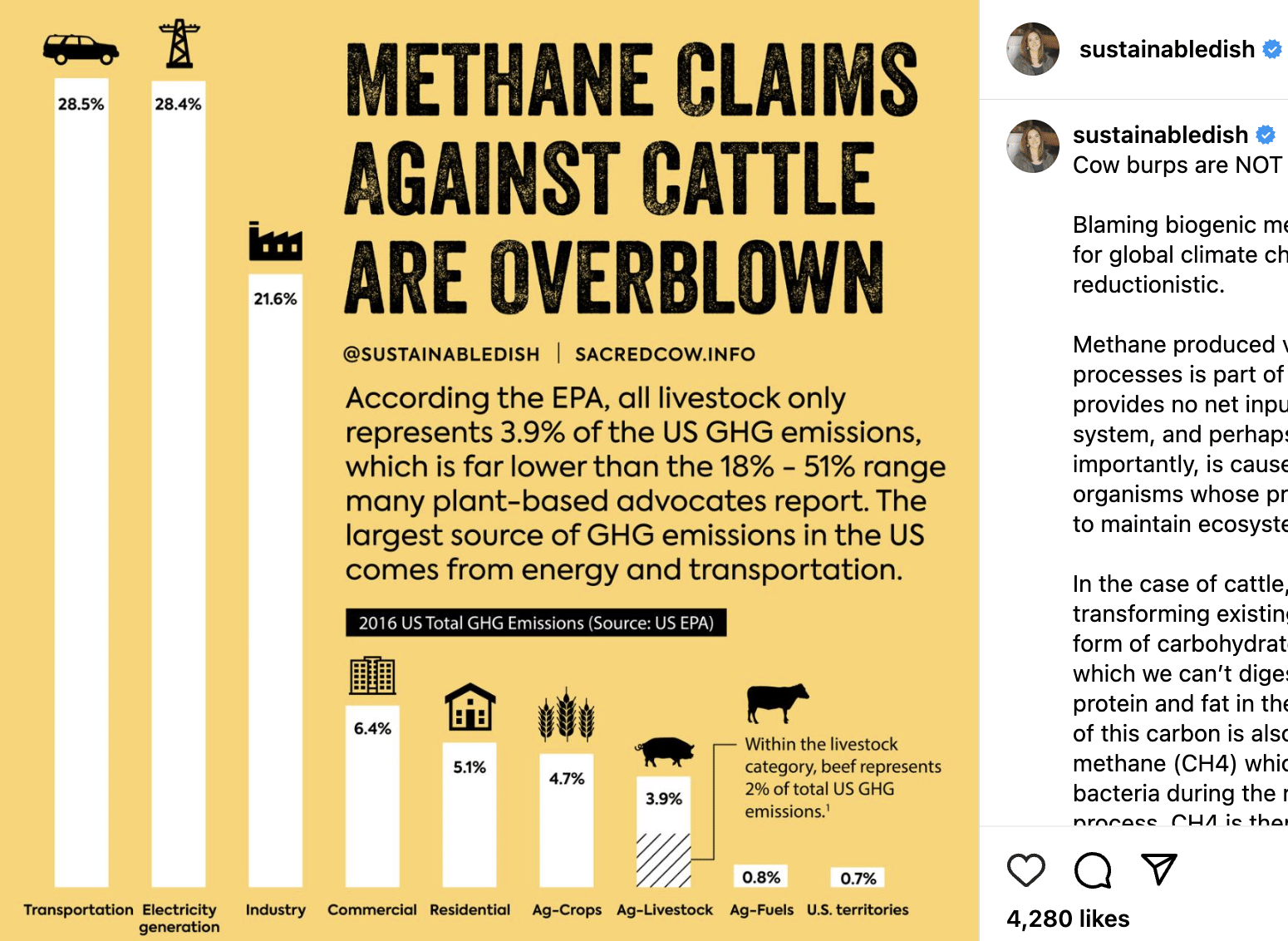- Climate
- Energy
How much of a climate solution can technologies such as carbon capture and storage be?

Science has shown consistently that adding CO2 to the atmosphere is changing the climate in various ways, including raising the surface temperature of the oceans and atmosphere. One of the climate change mitigation technologies is carbon capture and storage (CCS), where CO2 is captured from power plants and other industrial processes instead of being emitted into the atmosphere. Interest in CCS has grown, especially since it is mentioned by the Intergovernmental Panel on Climate Change (IPCC) as one of the mitigation options to reach net zero emissions of CO2 and greenhouse gas. Carbon capture and storage technologies are currently at the heart of heated controversies. Some, like Greenpeace, call it a scam or see it as a way to extract more fossil fuels, while others, mostly working in the fossil fuel industry, credit it as a reliable and proven solution to climate change. Energy company Total Energies even claims that CCS is the best way to drastically reduce industry emissions. Newspaper articles and social media users also confuse it with other types of technologies. This wide range of claims and growing interest call for clarifications to help readers understand the potentials and limitations of CCS as a climate solution.
Capturing carbon dioxide, but from where?
Numerous newspaper articles on CCS technologies imprecisely define it as removing carbon from the air or atmosphere, confusing it with carbon dioxide removal (CDR). There are various CDR methods such as agroforestry, ocean alkalinity enhancement, and direct air carbon capture and storage as explained in this illustrated factsheet from the IPCC. CCS technologies prevent emissions from reaching the atmosphere while CDR involves capturing CO2 directly from the atmosphere. “CDR is used to undo past emissions, as well as counterbalance residual CO2 and non-CO2 GHGs from sectors like agriculture that will be impossible to fully decarbonize” underlines Stripe Climate Lead and Berkley Earth research scientist Zeke Hausfather in an email to Science Feedback. The two main reasons for distinguishing between CCS and CDR are different timelines and roles in climate change mitigation. Timelines first, because CCS captures immediate releases of emissions when CDR is a solution for reducing the long-term balance of CO2 in the atmosphere. The consequence is that both technologies act on different climate change mitigation issues. While CCS contributes to limiting future climate change by preventing new emissions from adding to the stock of atmospheric CO2, CDR helps mitigate the impact of past emissions by reducing the stock of atmospheric CO2. “So we can separately argue about the merits of CCS versus renewables or CDR versus deeper emissions reductions. But mixing up two very different sets of technologies just confuses everyone and leads to us arguing in circles more often than not” adds Zeke Hausfather.
Is CCS mainly used to extract more fossil fuels?
Many social media posts and articles argue that CCS is mainly used in a form that enables extracting more fossil fuels. Such a type of CCS does indeed exist and is called enhanced oil recovery (EOR). This process uses the CO2 captured from emissions to be injected into existing fossil fuel wells. Injecting CO2 into oil reservoirs to enhance oil recovery has been practiced on a commercial scale for nearly 50 years. “Experience in the United States shows that CO2-EOR can boost recovery by 5% to 15% of the original oil in place” observed the International Energy Agency (IEA) in a report. We investigated this claim using data from the Global CCS Institute on existing facilities. We find that 70% of the operational CCS facilities are enhanced oil recovery systems in 2022 (see Figure 1). This figure shows that CCS operational facilities have always predominantly featured EOR since the 1970s.
Figure 1 – Number of operational CCS facilities developed since 1972 with Enhanced Oil Recovery (red line) and Geological Storage (blue line). CCS facilities with a capture capacity of at least 0.2 million tons of CO2 per year are shown. Data source: Global CCS Institute 2022 Facilities List. It is therefore correct to state that most CCS facilities are extracting more fossil fuels. While this part of the claim is true, it is incorrect to reduce the role of such CCS facilities to just extracting more fossil fuels, as it does capture carbon dioxide at first. Yet, injecting the captured carbon for fossil fuel extraction does expand the scope of CO2 emission caused by the entire process.
Is CCS the best way to reduce industry’s carbon dioxide emissions?
Let’s now investigate the claim that “Carbon capture & storage is the best way to drastically reduce industry’s carbon output” as claimed by the fossil fuel and renewables company Total Energies in a Facebook post. The industry sector represents 23% of global emissions and amounts to 8.3 billion tons of CO2 in 2022 according to the IEA. Worldwide, CCS facilities captured 44 million tons of CO2 in 2022 according to the same agency, representing 0.5% of industry emissions that year. So CCS is only a small part of the climate solution as of today. Given that “current rates of deployment are far below those found in the modeled [IPCC] pathways” according to Global CCS Institute’s 2022 report, the above claim can only be valid based on aggressive projections of future improvements and large-scale deployment. The IPCC provided a figure listing mitigation options and their estimated range of costs and potentials for lowering greenhouse gas emissions in 2030 (See Figure 2). The potential contribution to lower emissions by 2030 is shown with a bar graph, which ranges from 0 to 5 billion tons of CO2-equivalent per year. The cost of each mitigation option is shown as a color from blue to dark red on each bar, corresponding to a price from lower than 0 to 200 USD per ton of CO2-equivalent. A bar with several colors shows how the cost changes with the magnitude of the mitigation.
 Figure 2: Overview of mitigation options and their estimated ranges of costs and potentials in 2030. Source: IPCC.
Figure 2: Overview of mitigation options and their estimated ranges of costs and potentials in 2030. Source: IPCC.
CCS’ potential in the Industry sector
Compared to other options, figure 2 shows that CCS has the lowest potential for mitigating the industry sector’s CO2 emissions by 2030 and is rated in the most costly category. In detail, CCS’ potential contribution to net emissions reduction by 2030 for industry is estimated at around 0.2 billion tons of CO2-equivalent per year, and its cost is evaluated between 100 and 200 USD per ton of CO2-equivalent. By comparison, improving energy efficiency has more than five times CCS’ potential for industry, and would be at least ten times cheaper. CCS applications are also much more mature in the oil and gas sector than in other fields of the industry sector according to the IPCC’s Sixth Assessment Report, which cites cement and chemicals industries as such examples[1]. The issue is that cement and chemicals industries are precisely “where it is a critical mitigation option”, emphasizes the report. Small-scale technologies like solar energy and batteries also “tend to improve faster and be adopted more quickly than large-scale technologies (nuclear, CCS)” adds the report. In consequence, it is incorrect to claim that CCS outcompetes other options for reducing the industry’s CO2 emissions. Furthermore, it is especially misleading to say CSS is the best way to “drastically” reduce industry emissions. Nevertheless, there are likely to be industry applications where CCS is the most effective decarbonization strategy.
CCS’ potential in the Energy sector
Figure 2 also informs on CCS’ potential role in lowering greenhouse gas emissions by 2030 for the energy sector, which we discussed above. For energy supply, CCS is given a potential contribution to reducing emissions of around 0.5 billion tons of CO2-equivalent. It is rated with a cost ranging from 50 to 100 USD for the first half of its contribution and 100 to 200 USD for the second half. When compared to other options, CCS appears to have relatively limited potential. For instance, wind energy is indicated to have almost eight times CCS’ potential, with the lowest cost range for the first half of its contribution. The blue color for wind even indicates negative costs, meaning that it is less costly to build wind energy than not, due to the damage resulting from emitting greenhouse gasses with other forms of energy. Solar energy also has negative costs for more than half of its potential contribution to net emissions reduction. Precisely, it could achieve five times CCS’ potential contribution with negative cost. The figure also highlights many other low-priced options in other sectors with greater potential to reduce global emissions than CCS such as shifting to public transportation, or efficient lighting and equipment. Comparing CCS’ potential role in the energy sector is especially important since most CCS facilities have been built on power plants. Today, 76% of operational CCS facilities in the world capture CO2 from power plants (See Figure 3).
Figure 3 – Number of CCS operational facilities developed on power plants and industry plants since 1972. CCS facilities with a capture capacity of at least 2.3 million tons of CO2 per year are shown. Energy plants include ethanol production, hydrogen production, natural gas processing, oil refining, power generation, and synthetic natural gas. Industry plants include chemical production, fertilizer production, iron and steel production. Data source: Global CCS Institute 2022 Facilities List
CCS upstream emissions
On Facebook, American politician Robert F. Kennedy Jr –identified by the Center for Countering Digital Hate as one of the 12 influencers playing a key role in spreading English-speaking anti-vaccine disinformation– claims CCS is “the industry’s latest scam” linking to an article where CCS is described as “extremely energy intensive” and only producing “more climate pollution”. On the other hand, the Canadian Energy Centre, a private corporation promoting Alberta’s oil and gas industry, claims that “CCS projects are successfully reducing industrial emissions around the world”. To understand CCS’ ability to reduce emissions, it is necessary to differentiate CCS facilities that extract oil from the ones that don’t.
CCS with EOR
First, let’s look at the evidence on EOR. In a report on CO2 storage with EOR, the IEA states that conventional EOR emits more CO2 than it can capture, assuming that the produced oil represents additional oil consumption. The IEA obtained this result when including the downstream emissions from combustion of petroleum produced. The balance between one ton of CO2 stored and life cycle emissions with conventional practices results in net emissions of 0.8 tons of CO2-equivalent. Thus with this first approach, one concludes that CCS with EOR emits 80% more than it captures. However, a different approach resulting in completely different results is also mentioned in the IEA report and other studies. It consists of assuming the oil produced from EOR will be used instead of conventionally produced oil, rather than being a supplement to global oil consumption. EOR oil has a lower carbon footprint than conventional oil according to studies on the few operating EOR units[2]. “The reduction in consumption of a higher carbon intensity crude results in an emissions reduction” explains the IEA report. With this approach, EOR net emissions become negative at -0.63 tons of CO2-equivalent per ton captured when the IEA assumes that EOR oil would displace conventional oil. This second approach has been criticized by scientists for several reasons. “Without a detailed economic model that captures the complexity of oil use or electricity production and management it is difficult to be certain what sources, if any, will be displaced” warns a published study on the subject[3]. The assumption relies on projections that international oil markets will replace current oil products, and that EOR production will greatly increase, which the IEA calls “critical questions”. As debate moves on to economics, researchers in the field have also pointed to limitations. “The introduction of EOR may not displace any production, though it necessarily will delay the development of some new sources of production” concludes a published study which modeled oil markets[4]. To sum up, the first approach doesn’t rely on displacement assumptions and finds that CCS with EOR emits more CO2 than it captures while the second approach relies on such assumptions and finds that EOR captures more CO2 than it emits. Since 70% of CCS units worldwide feature EOR, one should clearly explain which approach is used when commenting on CCS’ impact on emissions.
CCS without EOR
CCS without EOR in turn amount to 30% of currently operational facilities. Scientists compared the life cycle emissions from fossil fuel power plants in the United Kingdom with and without CCS[5]. This time, the studied CCS facilities are not featuring EOR. The study found that CCS is able to reduce life cycle emissions by 75 to 84% depending on what technology is used. So, based on this analysis, CCS facilities without EOR can indeed be a net CO2 sink when installed on fossil fuel plants.
Is CCS energy efficient ?
A 2020 study looked into the energy efficiency of power plants with EOR and without CCS throughout their life cycle, including its whole infrastructure. “From a thermodynamics point of view, CO2 EOR with a CCS option is unsustainable […] during the life cycle of the process more energy is consumed than the energy produced from oil” the study explains. Scientists use the concept of energy penalty to measure the additional electricity required to run the carbon capture equipment per unit of electricity produced by the power plant for normal electricity consumption. CCS’ energy penalty is estimated between 13% and 44%, a high penalty “leading to further cost increases”, according to IPCC’s Working Group III in its contribution to the Sixth Assessment Report[6]. It should be noted that this observation is only made at power generation plants, and not at industry plants. Another method to evaluate the claim that CCS is extremely energy intensive is called energy return on energy invested (EROEI), which is the ratio of the energy made available to society over the energy invested in the construction, operation, and fuel procurement for the power plants. Scientists found that the energy return of fossil fuel power plants with CCS ranges between 6.6 and 21.3, at 90% and 85% capture ratio (the capture ratio is the proportion of CO2 captured by the system)[7]. Without CCS, studied natural gas plants have an energy return of 31, according to the study. So CO2 capture does significantly decrease the energy available to society. Power plants with CCS’ energy return is especially low when compared to other mitigation options that have a more favorable return on energy investment. According to this study, “dispatchable renewable energy with storage ranges from 9 to 30+ for average-quality photovoltaics and wind, with realistic efficiency and storage fraction levels”. Consequently, scientific evidence shows that current CCS facilities have high energy intensiveness, which is yet not to be exaggerated with “extreme” as worded in the claim. Researchers and companies are looking into ways to improve the energy consumption of CCS systems. A promising field is capturing CO2 with the help of solvents and enzymes. “Due to the absence of interferences and intrinsic resistances along with the cost-effective downstream process […] enzymatic electrosynthesis can thus be a remarkably energy efficient process” notes a published review article on the topic[8]. So there is potential for improvement of CCS’ energy efficiency in the future.
What are CCS’ limitations for mitigating climate change?
CCS is mentioned by scientists as a climate solution for two different reasons[9]. First, it can be a solution to reduce industry and energy emissions while bridging the gap to low emissions. Second, it can be a long-term solution to reduce emissions from hard to decarbonize and energy-intensive industries. CCS’ large-scale use for mitigation also raises concerns. “I think it is clear from the evidence that we need to implement many solutions to reducing CO2 emissions –and CCS might play a small role, but it can certainly be counter-productive if it is used as an excuse or substitute which delays other mitigation options” comments IPCC Lead Author and Met Office researcher Chris Jones in an email. Indeed, a study modeled CCS implementation scenarios over Germany, for instance, and found that “an increased build-up of CCS power plants will also reduce the capacity of wind power considerably as compared to the scenario without CCS”[10]. So there is a valid concern that CCS could be widely installed on industrial and energy supply processes where there are other existing options for achieving more significant CO2 cuts. Once CCS facilities and infrastructure are in place, there is a risk that it reduces the incentive to invest in other technologies with more CO2 reduction potential (a ‘technological lock in’)[11]. Another concern is linked to the storage for carbon captured from CCS plants: “The vast amounts of CO2 that would need to be stored are a huge logistical issue and the storage locations are not always in the same place as the CO2 is captured. Hence reducing CO2 emissions in general vastly reduces future reliance on unproven technology like CCS” reminds Chris Jones. Lastly, the IPCC also raises the issue of CCS water consumption: “In several cases, water withdrawals for CCS are 25–200% higher than plants without CCS due to energy penalty and cooling duty”. Such water consumption can in turn become a vulnerability because scientists have found water scarcity to be one of climate change’s major impacts. In fact, the “water crisis” has been one of the top five risks in all IPCC reports since 2015.
Scientists’ Comments

Director of Climate and Energy, The Breakthrough Institute
Carbon dioxide removal (CDR) is not the same as carbon capture and sequestration (CCS), and we need to stop inaccurately conflating the two. CDR removes CO2 that was previously released to the atmosphere and is carbon negative, while CCS (in most applications) just reduces the amount of CO2 reaching the atmosphere and is at best carbon neutral.CDR refers to anything that draws down atmospheric CO2 and removes it for some period. This includes planting trees, enhancing soil carbon, biomass carbon removal, ocean biomass sinking, enhanced rock weathering, ocean alkalinity enhancement, and direct air capture among others.CCS is the process of capturing CO2 before it enters the atmosphere, generally from a point source like a power plant. CCS is rarely perfect, meaning that there are some residual lifecycle emissions remaining, though it’s still a lot better than unmitigated fossil fuel use. There are some cases where CCS can also be CDR (such as when it’s used for biomass power plants whose feedstocks are effectively made of recent atmospheric CO2), but this is the exception rather than the rule.CDR and CCS play very different roles in mitigation scenarios. CCS is a competitor with other clean energy, such as hydrogen for industrial heat or renewable energy for electricity generation. There are real concerns that its large-scale deployment could prolong fossil fuel use. CDR is used to undo past emissions, as well as counterbalance residual CO2 and non-CO2 GHGs from sectors like agriculture that will be impossible to fully decarbonize. There are potential moral hazard concerns with CDR, but no way around needing it at a gigaton scale.So we can separately argue about the merits of CCS vs renewables or CDR vs deeper emissions reductions. But mixing up two very different sets of technologies just confuses everyone and leads to us arguing in circles more often than not.As mentioned above, CCS can only reduce our emissions, but cannot undo the damage we have already caused or deal with parts of our economy that cannot be fully decarbonized. There are likely to be applications where CCS is the most effective decarbonization strategy, but it’s got a lot of competition from other mitigation options (renewables, hydrogen, etc.). CDR, on the other hand, is something that we cannot easily avoid as we are likely to have some climate overshoot of our most ambitious targets (e.g. 1.5°C) and some residual emissions that we cannot fully mitigate. But we need to be careful to not treat CDR like a silver bullet or as an alternative to mitigation. Most of our emissions scenarios to meet our most ambitious targets involve somewhere around 90% mitigation and 10% removal to get from current global emissions to net-zero. We should be skeptical of using CDR as an alternative to things that we can mitigate today, which is a problem for low-cost offsets (primarily from reforestation/afforestation and soil carbon sequestration) in carbon markets today. One important principle in using CDR to make neutralization claims (e.g. that it effectively undoes a ton of emissions) is the idea of “like for like“. Right now fossil carbon dioxide is generally treated interchangeably with carbon dioxide emissions from land use change or from emissions of methane. Emissions from burning coal, oil, or natural gas can only be credibly offset by removing carbon dioxide and storing it in a form that will be stable for the many thousands of years fossil carbon dioxide emissions would have remained in the atmosphere. Land use emissions can be offset by paying others to plant trees or put more carbon into soils. And methane leaks can be offset by paying others to reduce methane emissions. Even here, there is a high bar to demonstrate that payments to others to reduce emissions or remove carbon dioxide actually lead to real reductions in emissions that would not otherwise occur.

Research Fellow, Earth System and Mitigation Science Team at the Met Office Hadley Centre
From a physical science perspective, we simply need to stop CO2 going into the atmosphere. From a societal perspective we need to continue to be able to generate energy. Therefore the two options to reconcile these things are to either keep burning fossil fuel, but stop the CO2 going into the atmosphere (i.e. by capturing it when we burn it), or we generate energy without generating CO2 (i.e. renewables, wind, solar, hydro etc). The former is known as CCS as you know. The IPCC report has to be scientifically objective and policy neutral – it doesn’t and cannot recommend one policy as preferable to another. But it can give the science facts. These include economic assessment – for example the figure in the IPCC SYR which shows that wind and solar have much greater, and cheaper potential as solution technologies. But it is still true that use of fossil fuel with CCS is an option which can contribute to mitigation – albeit in a smaller and less cost-efficient way. Where I can’t comment as out of my field is whether or not big industry is using this as greenwashing and/or a way to gain subsidy in order to avoid reducing fuel use. I think it is clear from the evidence that we need to implement many solutions to reducing CO2 emissions – and CCS might play a small role, but it can certainly be counter-productive if it is used as an excuse or substitute which delays other mitigation options. Another concern is the storage potential – the vast amounts of CO2 that would need to be stored are a huge logistical issue and the storage locations are not always in the same place as the CO2 is captured. Hence reducing CO2 emissions in general vastly reduces future reliance on un-proven technology like CCS.
REFERENCES
- [1] IPCC (2023). Synthesis Report of the IPCC Sixth Assessment Report (AR6). IPPC.
- [2] Azzolina et al. (2016). How green is my oil? A detailed look at greenhouse gas accounting for CO2-enhanced oil recovery (CO2-EOR) sites. International Journal of Greenhouse Gas Control.
- [3] Jaramillo et al. (2009). Life Cycle Inventory of CO2 in an Enhanced Oil Recovery System. Environmental Science & Technology.
- [4] Veld et al. (2012). The Economics of CO2 Sequestration Through Enhanced Oil Recovery. Energy Procedia.
- [5] Odeh et al. (2008). Life cycle GHG assessment of fossil fuel power plants with carbon capture and storage. Energy Policy.
- [6] IPCC (2021). Climate Change 2022: Mitigation of Climate Change. Working Group III Contribution to the IPCC Sixth Assessment Report. Cambridge University Press.
- [7] Sgouridis et al. (2019). Comparative net energy analysis of renewable electricity and carbon capture and storage. Nature Energy.
- [8] Chiranjeevi et al. (2019). Current trends in enzymatic electrosynthesis for CO2 reduction. Current Opinion in Green and Sustainable Chemistry.
- [9] Paltsev et al. (2021). Hard-to-Abate Sectors: The role of industrial carbon capture and storage (CCS) in emission mitigation. Applied Energy.
- [10] Martinsen et al. (2007). CCS: A future CO2 mitigation option for Germany?—A bottom-up approach. Energy Policy.
- [11] Shackley et al. (2011). Lost in the mix: will the technologies of carbon dioxide capture and storage provide us with a breathing space as we strive to make the transition from fossil fuels to renewables? Climatic Change.



